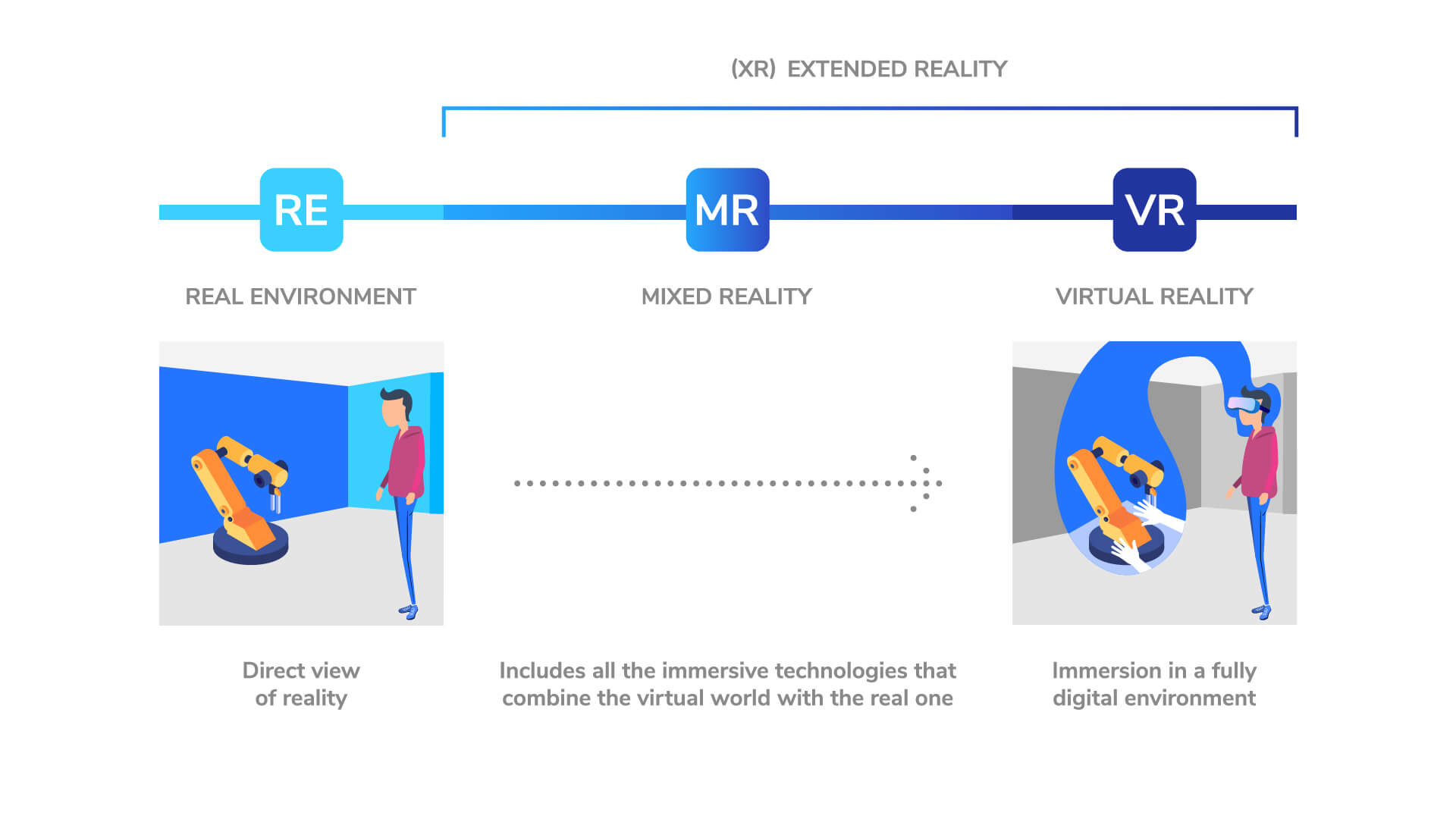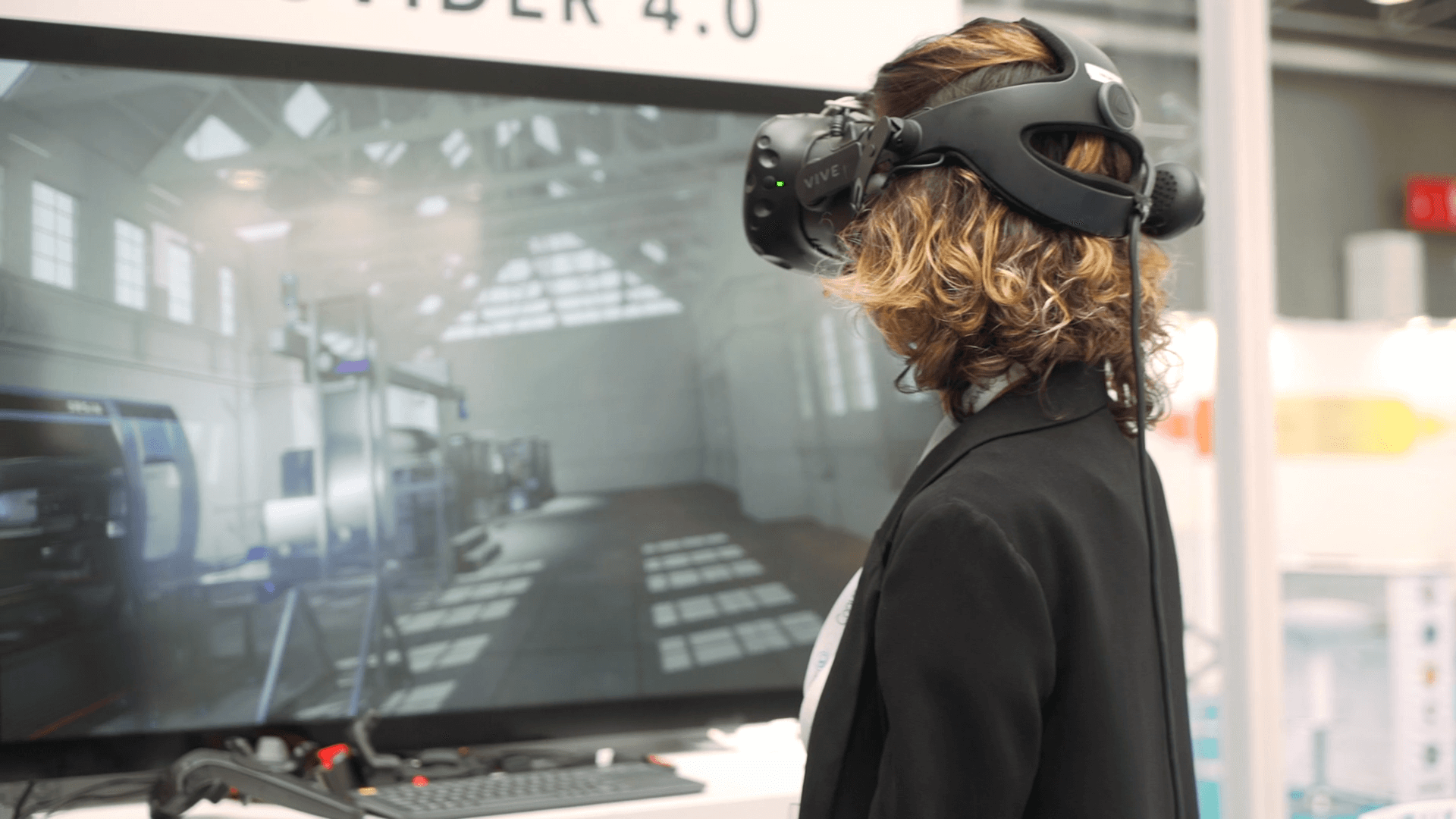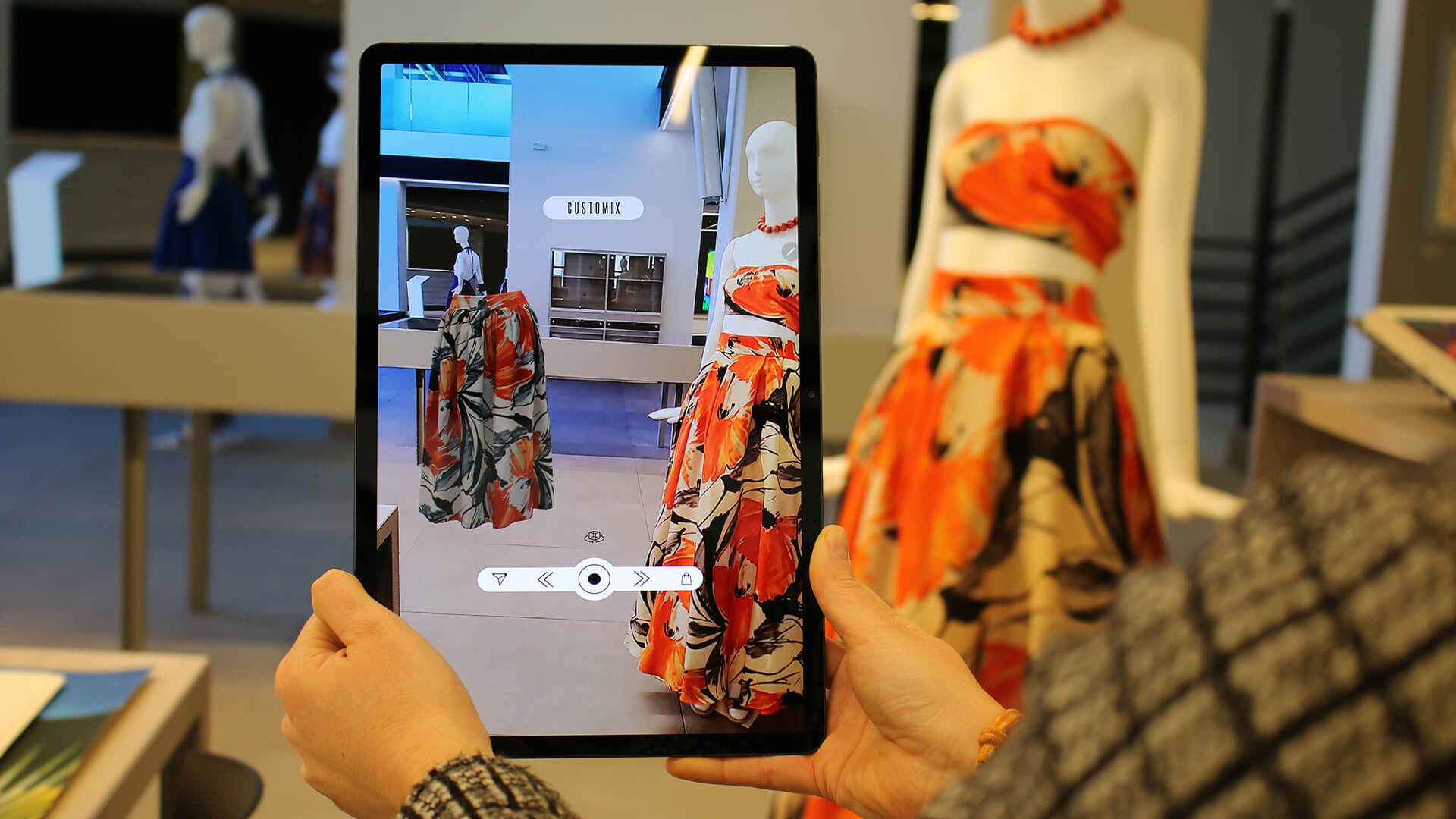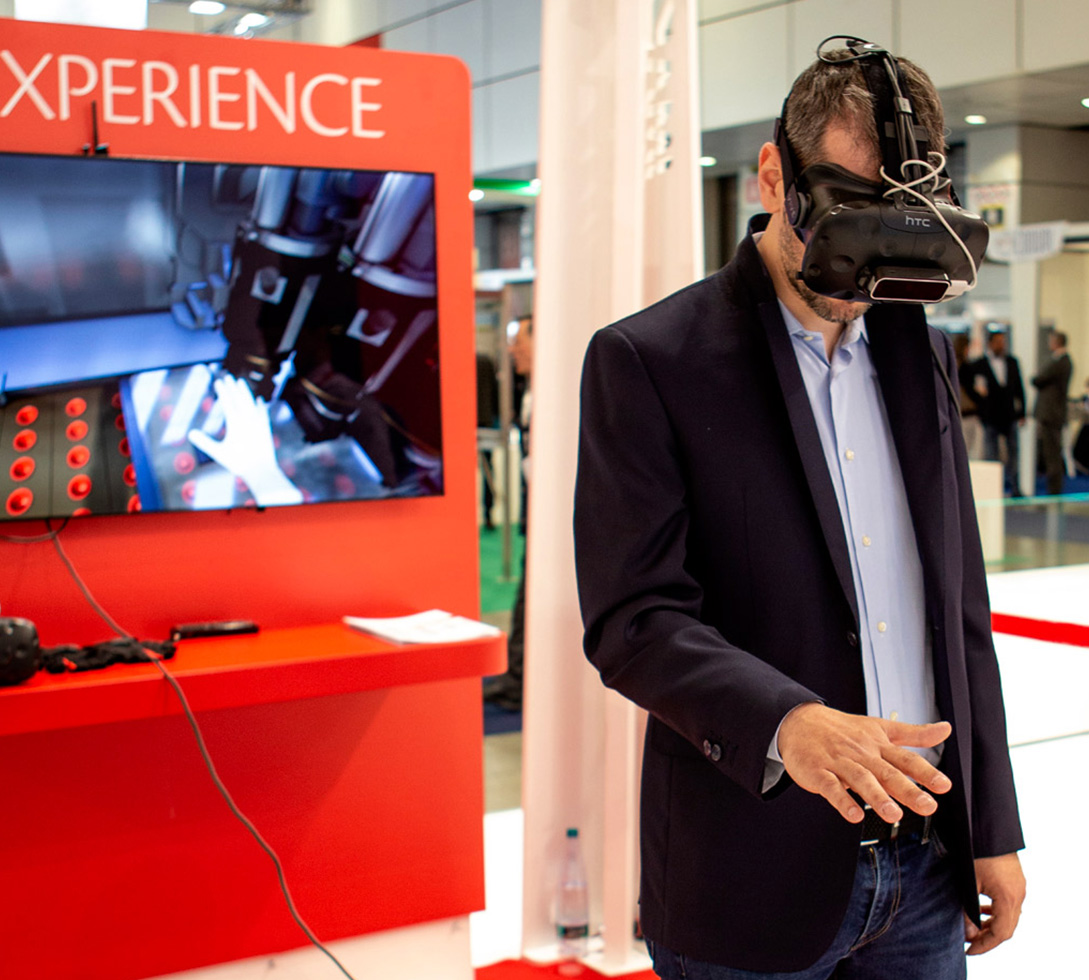The differences between XR, VR, MR and AR
In the era of Digital Transformation, Extended Reality (XR) includes some of the most promising enabling technologies with the potential to reconfigure business processes and procedures

In the era of Digital Transformation, Extended Reality (XR) includes some of the most promising enabling technologies with the potential to reconfigure business processes and procedures, but there is still a lot of confusion around this world. That's why we decided to shed some light on it.
Extended Reality (XR)
Extended Reality (XR), in the panorama of immersive technologies, represents the broader concept of "non-reality", of the new models of human-computer interaction. To simplify, we can assimilate the "x" to the algebraic concept of variable that represents all the opportunities inherent in this field, such as Virtual Reality (VR), Mixed Reality (MR) and Augmented Reality (AR).
These immersive technologies concretely change the way people perceive and interact with reality. They take the user experience to a completely new level, increasing customer satisfaction and, consequently, the company business.
Virtual Reality (VR)
Virtual Reality (VR) is the most known technology belonging to this world.
Through the zeroing of hearing and sight and thanks to the use of devices such as VR headsets (HMD), headphones and haptic gloves, VR allows you to completely immerse yourself in a new 100% digital world where you can interact with the elements it contains, as if you were really inside it.
The intention is to completely replace the real world with an immersive virtual experience that feels real, even if the stimuli you receive are generated by a computer.
At the moment VR is commonly seen as a revolutionary tool for the world of gaming and entertainment, but it represents a real added value for companies that adopt it both for sales and marketing and for improving processes and workplace safety.
 A clear example of the use of VR for business needs is our FLY, an interactive 3D simulation system that allows companies to present the virtual copy of products, such as machines and production plants even of high complexity, with which the user can interact by animating the entire process and by managing different configurations in real time.
A clear example of the use of VR for business needs is our FLY, an interactive 3D simulation system that allows companies to present the virtual copy of products, such as machines and production plants even of high complexity, with which the user can interact by animating the entire process and by managing different configurations in real time.
Mixed Reality (MR)
MR offers the possibility of having one foot in the real world and the other one in the digital world thanks to the use of smartglasses, such as Microsoft's Hololens, or more simply via the camera of a smartphone. The goal of Mixed Reality is to add relevant digital information to the physical world in real time, and to allow you to physically interact with them.

Augmented Reality (AR)
The experiences in AR are designed both to take advantage of the cameras of mobile devices, such as smartphones and tablets, or for particular viewers equipped with a transparent display, the smartglasses mentioned above. Smartglasses are a sort of glasses capable of projecting digital elements onto your visual field with which, however, you cannot physically interact.
Unlike Virtual Reality, the most common uses for Augmented Reality are still focused on mobile devices due to the high cost of smartglasses, which puts them out of reach for most consumers. But it's only a matter of time, and also these special devices will become relatively cheap and commonly used.
To help you better understand what can be achieved with AR, you can find in the pictures an example of how we apply this technology to the world of fashion.
Thanks to Augmented Reality (AR), we offer a solution that allows companies to preview products in 3D. The result is the creation of a personalized and interactive shopping experience for the customer, and an enhancement of marketing solutions for the company, increasing the conversion rate and reducing the percentage of returns.
These are just some of the many scenarios that can be generated thanks to immersive technologies.
In fact, their application can be extended to business processes of all kinds, from sales and marketing activities, to remote support, to training and learning, up to production.
In addition, thanks to the technological progress in mobile networks (5G) and sensors and thanks to the falling cost of devices, Extended Reality has all it takes to become the new "never again without".



